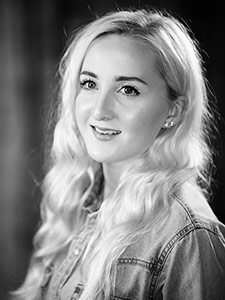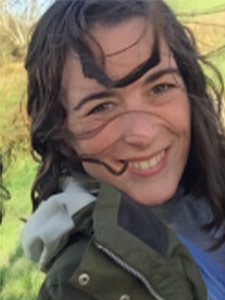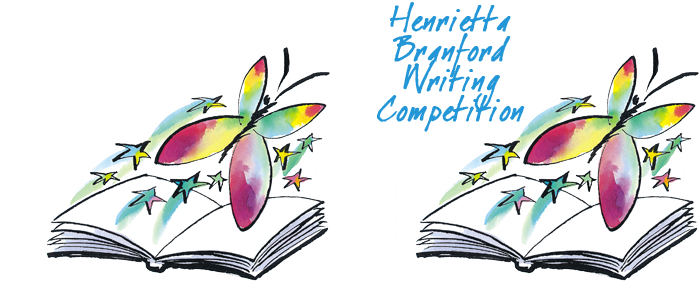Q&A with author Holly Jackson
 What made you want to write a murder mystery?
What made you want to write a murder mystery?
Murder mysteries and crime thrillers have always interested me as a consumer, in both books and TV shows/ films. But the real inspiration for AGGGTM was the world of true crime: podcasts and documentaries. I became a true crime obsessive and wanted to write a book which replicated this ‘real’ amateur detective angle.
What were the challenges of having a teenage girl as your ‘detective’? How did you manage them?
I didn’t see having a teenage girl as the detective as a challenge at all. I saw it only as a strength with so many possibilities to explore. One of my favourite parts of writing was coming up with ways that Pip could turn everyday tech into crime solving tools as – being a teenager – she doesn’t have the full resources of a police force. Other characters under-estimate her and Pip is able to turn that complacency into a weapon against the adults involved in this case.
What was the thing you most enjoyed about working with Lindsey on the book? Why?
Given the inspiration for the book, I really wanted the book to have a ‘true crime’ feel, with multi-media elements and found-footage type items to create an immersive experience. Lindsey totally embraced this from the beginning, and though those multi-media elements often caused formatting hijinks while editing, I think the final book is all the better for them. So I’m very grateful that Lindsey fully supported this dual format from the get-go and was this book’s greatest champion.
What was the most challenging thing about writing the book? What aspect are you most proud of?
I think, with any crime thriller, a lot of pressure is put upon having THE BIG TWIST. It’s an expected part of the genre and you want to strike the right balance between shocking the reader, but also that they accept the twist was guessable all along, they just didn’t see it. I think that was the most challenging part, coming up with an original way to surprise a reader who is likely well-versed in crime thrillers and their tricks, as quite often books in this genre seem to live or die upon their final reveal. And, from reading reviews, I think I largely pulled this off, for which I am very relieved!
What advice would you give to debut authors?
My piece of advice, which I often did not heed myself, is to try to remember what is at the heart of this career: the joy of storytelling. During the publishing process, it is sometimes easy to forget this when you’re scouring the manuscript for errant semi-colons at 3 a.m., or panicking about word count or getting stressed about any of the other details about the business of book-making. Because it will be stressful. But at the end of the day, try to remember that your ultimate job is to tell a story that you yourself would have loved to read, and that is the best job in the whole world.
Q&A with editor Lindsey Heaven
 What most excited you about Holly’s manuscript when you first read it?
What most excited you about Holly’s manuscript when you first read it?
It was the most compelling thing I’d ever read. We were utterly addicted to Pip’s investigation from the first page. The editors and I were WhatsApping each other at ridiculous times during the night, checking which bit we’d got to.
What would you say are the qualities of her writing that mark her out as a talent to watch?
Holly’s sense of social justice rings out in equal measures to the most credible YA voice and addictive mystery I’ve ever read. But it’s a style of writing that transcends YA and Holly has growing ranks of adult fans. She’s commercial, distinctive, brave and I‘ve never met an author who cares so deeply about every detail from the nuance of a character’s words to every last full stop.
How did you work with Holly on her manuscript, were there things you asked her to change?
In a crime novel, the unbelievable, 1-in-a-million chance thing happens – the worst thing that you ever think will happen happens and so you’re asking the reader to take a leap of faith. Holly and I talked a lot about how far you can stretch that leap, but that’s one of her absolute standout skills as a writer, taking the reader on an almost impossible journey whilst still having their full buy-in to where they’re going. She takes them to the very limit and I think they love the books even more for it!
What made you want to be an editor?
My first taste of publishing was work experience at Barrington Stoke, when it was still run in the then-owner’s living room. Barrington Stoke publish for children with reading difficulties such as dyslexia but they invite ‘mainstream’ authors to write for them so that the children aren’t reading visibly different or educational books. To know that children’s books could entertain, transform lives and bring children together in a shared love for one writer – across reading abilities – was a life-changing moment for me. I knew then what I wanted to do.
What advice would you give to debut authors?
Know your story and know your voice but be open to being challenged. You’ll discover what’s really important to you and where you can make what’s great, incredible.
A Good Girl’s Guide to Murder is published by Electric Monkey, 978-1405293181, £7.99 pbk.



